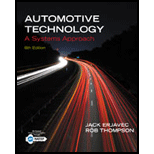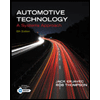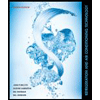
Automotive Technology: A Systems Approach (MindTap Course List)
6th Edition
ISBN: 9781133612315
Author: Jack Erjavec, Rob Thompson
Publisher: Cengage Learning
expand_more
expand_more
format_list_bulleted
Concept explainers
Textbook Question
Chapter 22, Problem 4ASRQ
Technician A says that multiplexing is a way to add wires without increasing the weight of the vehicle. Technician B says that multiplexing uses bus data links. Who is correct?
- Technician A
Expert Solution & Answer
Want to see the full answer?
Check out a sample textbook solution
Students have asked these similar questions
Basic electronics
Which of the following is a digital transducer?
a.
Strain gauge
b.
Thermistor
c.
LVDT
d.
Encoder
hile discussing NTC thermistors; Technician A says that some systems use this type of thermistor as a protection device. Technician B says that when there is high current in a circuit, the resistance of the thermistor increases and causes a decrease in current flow. Who is correct?
Chapter 22 Solutions
Automotive Technology: A Systems Approach (MindTap Course List)
Ch. 22 - Explain the three types of memory used in the...Ch. 22 - Signals resemble a square pattern.Ch. 22 - Signals can have varying voltage levels.Ch. 22 - Means that data concerning the effects of the...Ch. 22 - The type of memory' that contains specific...Ch. 22 - A is the simplest type of semiconductor.Ch. 22 - Prob. 7RQCh. 22 - Prob. 8RQCh. 22 - How should vou test a diode with a multimeter?Ch. 22 - What is the major difference between ROM and RAM...
Ch. 22 - Which of the following is not a type of...Ch. 22 - True or False? In a high-speed CAN system, a...Ch. 22 - Which of the following is not made of...Ch. 22 - Which of the following is a basic function of a...Ch. 22 - What is the name of the module that allows the...Ch. 22 - Prob. 1ASRQCh. 22 - While checking an A/C compressor clutch coil...Ch. 22 - Technician A says that some types of voltage...Ch. 22 - Technician A says that multiplexing is a way to...Ch. 22 - Technician A says that when a diode is placed in a...Ch. 22 - Prob. 6ASRQCh. 22 - While discussing multiplex system protocols:...Ch. 22 - Prob. 8ASRQCh. 22 - While diagnosing an electronic control system:...Ch. 22 - Technician A says that based on current...
Knowledge Booster
Learn more about
Need a deep-dive on the concept behind this application? Look no further. Learn more about this topic, mechanical-engineering and related others by exploring similar questions and additional content below.Similar questions
- While discussing multiplex system protocols: Technician A says that CAN communications are based on variable pulse widths carried on a single bus wire. Technician B says that Class B communications offer real-time communications over a twisted pair of wires. Who is correct? Technician A Technician B Both A and B Neither A nor Barrow_forwardWhile diagnosing a network communication failure: Technician A checks for communication codes in the problem network. Technician B checks for DTCs in all networks and modules. Who is correct? a. Technician A b. Technician B c. Both A and B d. Neither A nor Barrow_forwardTrue or False? In a high-speed CAN system, a serial data bus is used to allow communication between the various control modules in a vehicle.arrow_forward
- While discussing the comprehensive monitoring system: Technician A says that it tests various input circuits. Technician B says that it tests various output circuits. Who is correct? Technician A Technician B Both A and B Neither A nor Barrow_forwardTechnician A says that the waveform produced by an AC generator after rectification is called a sine wave. Technician B says that the waveform produced by the AC generator after the output moves through the diodes is a straight line because it is a constant DC voltage. Who is correct? Technician A Technician B Both A and B Neither A nor Barrow_forwardTechnician A uses a testlight to test circuit protection devices. Technician B uses a voltmeter to test circuit protection devices. Who is correct? Technician A Technician B Both A and B Neither A nor Barrow_forward
- 9. Technician A says that navigational systems rely on global positioning satellites. Technician B says that navigational systems rely on information programmed in its memory and information stored on a CD or DVD. Who is correct? Technician A Technician B Both A and B Neither A nor Barrow_forwardWhile diagnosing an electronic control system: Technician A turns the ignition off before disconnecting a connector or component. Technician B uses a jumper wire to bypass a potentially faulty sensor and then observes the scan tool. Who is correct? Technician A Technician B Both A and B Neither A nor Barrow_forwardTechnician A says that before a battery is removed, a memory' saver ought to be installed. Technician B says that before a battery is removed, the positive cable should be disconnected and the area around the battery should be cleaned. Who is correct? Technician A Technician B Both A and B Neither A nor Barrow_forward
- While diagnosing the control system of a BEV: Technician A begins by checking the voltage of the auxiliary battery. Technician B inspects all fuses, fusible links, wiring harness, connectors, and ground in the low-voltage circuit. Who is correct? a. Technician A only b. Technician B only c. Both A and B d. Neither A nor Barrow_forwardWhile diagnosing the location of a wire-to-wire short: Technician A checks the wiring of the affected circuits for signs of burned insulation and melted conductors. Technician B checks common connectors shared by the two affected circuits. Who is correct? Technician A Technician B Both A and B Neither A nor Barrow_forwardTechnician A uses a testlight to detect resistance. Technician B uses a jumper wire to test circuit breakers, relays, and lights. Who is correct? Technician A Technician B Both A and B Neither A nor Barrow_forward
arrow_back_ios
SEE MORE QUESTIONS
arrow_forward_ios
Recommended textbooks for you
 Automotive Technology: A Systems Approach (MindTa...Mechanical EngineeringISBN:9781133612315Author:Jack Erjavec, Rob ThompsonPublisher:Cengage Learning
Automotive Technology: A Systems Approach (MindTa...Mechanical EngineeringISBN:9781133612315Author:Jack Erjavec, Rob ThompsonPublisher:Cengage Learning Automotive TechnologyMechanical EngineeringISBN:9781337794213Author:ERJAVEC, Jack.Publisher:Cengage,
Automotive TechnologyMechanical EngineeringISBN:9781337794213Author:ERJAVEC, Jack.Publisher:Cengage, Refrigeration and Air Conditioning Technology (Mi...Mechanical EngineeringISBN:9781305578296Author:John Tomczyk, Eugene Silberstein, Bill Whitman, Bill JohnsonPublisher:Cengage Learning
Refrigeration and Air Conditioning Technology (Mi...Mechanical EngineeringISBN:9781305578296Author:John Tomczyk, Eugene Silberstein, Bill Whitman, Bill JohnsonPublisher:Cengage Learning

Automotive Technology: A Systems Approach (MindTa...
Mechanical Engineering
ISBN:9781133612315
Author:Jack Erjavec, Rob Thompson
Publisher:Cengage Learning

Automotive Technology
Mechanical Engineering
ISBN:9781337794213
Author:ERJAVEC, Jack.
Publisher:Cengage,

Refrigeration and Air Conditioning Technology (Mi...
Mechanical Engineering
ISBN:9781305578296
Author:John Tomczyk, Eugene Silberstein, Bill Whitman, Bill Johnson
Publisher:Cengage Learning
The Robot Revolution: The New Age of Manufacturing | Moving Upstream; Author: Wall Street Journal;https://www.youtube.com/watch?v=HX6M4QunVmA;License: Standard Youtube License